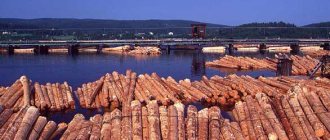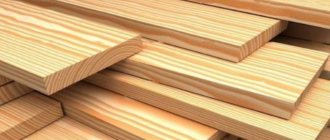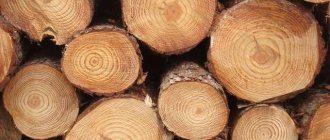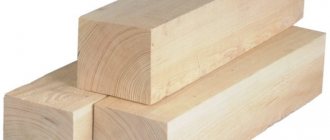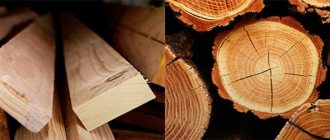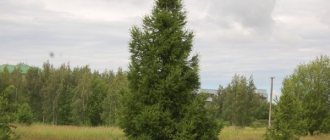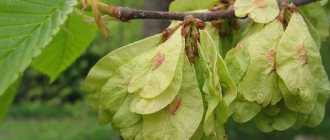Tests that do not lead to changes in the chemical composition of wood reveal its physical properties. The physical properties of wood include the following. Physical properties of wood:
- Appearance
- Humidity
- Shrinkage
- Warping
- Moisture absorption
- Swelling
- Water absorption
- Density
- Permeability
- Thermal properties
- Sound conductivity
- Electrical conductivity
- Electric strength
- Dielectric properties
- Properties manifested under the influence of electromagnetic radiation
Let's look at each of the physical properties of wood in more detail.
Appearance of wood
The appearance, in terms of the physical properties of wood, includes the following:
- Wood color is one of the most important characteristics of appearance. For some types of wood, the color is so characteristic that it can be a sign for recognition. The color may vary depending on the type of tree, the climate where it grew, and its age. Various wood, under the influence of air, light, fungal infections, or prolonged exposure to water, can significantly change its color from the original one, which was immediately after cutting the tree.
- Gloss is the ability of a wood surface to reflect light. Of the most used wood species in Russia, the most “brilliant” species are: oak, beech, white acacia, velvet wood
- Texture and macrostructure include the pattern that is formed as a result of cutting the medullary rays, vessels and annual layers on the surface of the wood. Quality assessment by appearance is based on the width of the annual layers and late wood content
Cracks
These are longitudinal ruptures that occur under the influence of internal stresses.
Cracks are divided according to the following properties:
- Methic.
Radial cracks inside a tree trunk. They are observed in all species, especially in overmature trees. Cracks appear as the tree grows and represent discontinuous faults along the length of the tree.
- Fuck off.
The peeling of wood fibers within the core and the peeling of mature wood from a growing tree. Peeling cracks can be found in every breed. The reasons for the occurrence of such cracks have not been fully established.
- Frosty.
Longitudinal tears from the outside on the trunk of a young tree. Basically, frost cracks predominate in deciduous trees and are very rare in conifers. Cracks appear when there are sudden changes in winter temperatures.
- Shrinkage cracks.
They appear under the influence of uneven shrinkage and are revealed when sawing the assortment.
Cracks are the main reason for the decrease in the strength of timber used in construction. In addition, cracks facilitate the invasion of fungal diseases and moisture penetration into the material.
Wood moisture content
The ratio of the mass of water contained in wood to the mass of dry wood is a physical indicator of wood moisture content. Wood moisture content is calculated by direct and indirect methods.
The indirect method includes measurement with a conductometric electric moisture meter, which determines the electrical conductivity of wood. Using the indirect method saves time, but its readings may have an error of up to 30%.
Direct methods take significantly longer to measure moisture. The essence of direct methods is to release water from wood in one way or another, during drying, for example.
The water contained in wood is distinguished into two types - bound, located in the cell walls, and free, located in the cavities of cells and intercellular spaces. Free water is removed more easily than bound water.
Wood pores
The normalized humidity indicator is 12% if there are no notes.
Physical properties of wood. Depending on the degree of humidity, they are distinguished
- Wet wood that has been under water for a long time (100%)
- Freshly cut wood, which has the moisture content of a growing tree (50-100%)
- Air-dried wood that has dried in the open air (15-20%)
- Room-dry, which was in a heated room for a long time (8-12%)
- Absolutely dry, which was dried in special chambers, with a temperature of 103+-2 degrees Celsius.
Deformability
Under short-term loads, predominantly elastic deformations occur in wood, which disappear after the load. Up to a certain limit, the relationship between stress and strain is close to linear (Hooke's law). The main indicator of deformability is the coefficient of proportionality - the elastic modulus.
The elastic modulus along the fibers is E = 12-16 GPa, which is 20 times greater than across the fibers. The higher the elastic modulus, the stiffer the wood.
With an increase in the content of bound water and the temperature of the wood, its hardness decreases. In loaded wood, when drying or cooling, part of the elastic deformations is converted into “frozen” residual deformations. They disappear when heated or moistened.
Since wood consists mainly of polymers with long, flexible chain molecules, its deformability depends on the duration of exposure to loads. The mechanical properties of wood, like other polymers, are studied on the basis of the general science of rheology. This science examines the general laws of deformation of materials under the influence of load, taking into account the time factor.
Wood shrinkage
When bound water is removed, the wood volume and linear dimensions decrease. This property is called shrinkage. Shrinkage is not caused by the removal of free water. A larger number of cell walls per unit volume of wood contributes to more severe shrinkage.
- Wood shrinkage must be taken into account when sawing logs into boards, the so-called shrinkage allowances. For example, when drying lumber, etc.
- Shrinkage is not the same in different directions. Thus, in the radial direction the shrinkage is 1.5-2 times less than in the tangential direction.
- Maximum shrinkage occurs when all bound water is removed.
Shrinkage of wood
Without the participation of external loads, internal stress arises in the wood, which is formed due to unequal changes in the volume of wood.
In the surface areas of the board, the humidity is lower than in the center. Therefore, due to the fact that free drying is constrained, “tensile” stresses arise. In this case, compressive stresses arise inside the board.
If the tensile strength across the grain, the tensile stress, is reached, cracks will appear in the wood. Internal and superficial.
Trunk shape defects
Tree trunks also have certain defects:
- Convergence.
The tree trunk, during growth, gradually decreases in diameter from the bottom to the crown. When, for every meter of growth, the diameter of the trunk decreases by more than 1 cm, then this is tapering.
Deciduous trees are more susceptible to this defect than coniferous trees. The tendency is most pronounced in trees growing freely or in small forests. The denser the forest, the less greenness there is on the trees. This defect increases the amount of waste and reduces strength.
- Compulsiveness.
If the diameter of a trunk in the lower part of a tree exceeds the diameter of the same trunk at a height of at least a meter by 1.2 times, then this is called rooting.
- Ovality.
The tree trunk has the shape of an ellipse, and the maximum diameter is 1.5 times greater than the minimum. Ovality causes the tree to tilt and changes the structure of the wood.
- Growths.
Local thickening appears as a result of the negative effects of:
- fungal diseases;
- mycobacteria;
- viral infections;
- chemical factors;
- radioactivity;
- various damages.
- Curvature.
All tree species suffer from curvature of trunks. A simple curvature has one bend, a complex one has several bends in the trunk.
Curvature refers to the negative properties of wood.
Warping of wood
Warping of wood is divided into transverse and longitudinal. The term “warping” refers to a change in the shape of lumber.
Warping can occur during sawing, improper storage, asymmetrical planing, edge division due to imbalance of residual directions. Most often when drying. Due to shrinkage in different structural directions.
Warping is divided into two types: longitudinal (along the edge, along the face and winging) and transverse
Warped wood
Wood structural defects
Vices are divided into groups. The group contains certain types of defects.
Distorted location of wood fiber and annual layers
- Fiber inclination.
The inclined position of the fibers significantly reduces the strength of the wood, increases the shrinkage of the assortment along the length and causes the appearance of helical curvature and twisting of lumber. The slope of the grain significantly complicates the processing of lumber and reduces the wood's potential for bending.
- Curlyness.
This is a wavy and chaotic distribution of fibers.
Curling reduces tensile strength, increases toughness and resistance to splitting. Mechanical impact on curly material is very difficult. However, this vice also has its positive properties - a beautiful texture.
- Curl.
Distortion of annual layers near knots and growths.
- Reactive wood.
In inclined and crooked trunks, rare wood is formed, which is called reactive. This defect occurs under the influence of gravity, which causes reassignment of substances and inhibits the growth process.
- Bank.
Heeling degrades the quality of wood raw materials used in the pulp and paper industry.
- Traction wood.
Traction wood complicates the processing of materials. During processing, shaggy and mossy surfaces are formed, which, separated during cutting, fill the recess and prevent the rotation of the saws.
Bitches
Knots are the main, defining grade, defect of timber. Knots are classified as a significant defect that reduces the value of wood material.
Knots include the remaining bases of branches. It doesn’t matter in what quantities, but knots are always found in timber. The number of knots in the trunk, taking into account their condition, size and length distribution, depends on the tree species, growing conditions, climate, forest density and other factors.
According to the level of overgrowth, knots are divided into two types:
- open;
- overgrown.
Irregular anatomical formations
- False core.
The dark interior of the tree trunk is the false heartwood. The edge of the false nucleus does not come into contact with the border of the growth rings. The core is separated from the sapwood by a dark border.
The source of the defect is:
- age-related tissue separation;
- reaction to injury;
- influence of fungal diseases;
- exposure to cold weather.
A false core spoils the appearance of the product and reduces the possibility of easy bending. The core is rot resistant.
- Internal sapwood.
In the area of the core, several adjacent annual layers can form, similar to sapwood in color and other properties. Internal sapwood appears due to disruption of the natural activity of cells caused by frost.
- Spotting.
In some trees, due to damage to the structure, the influence of chemical factors, fungal diseases and the dominance of insects, small dark-colored zones appear on the wood.
Spotting does not have a special effect on any properties.
- Core.
In round timber, the existence of a pith is a common property and an inevitable phenomenon. The core significantly reduces the strength of parts with a small cross-section. In large sawn workpieces, the presence of a core is an undesirable factor. The core quickly rots.
- Displaced core.
This is the random location of the core, which prevents the mass use of materials. This property refers to negative indicators.
- Double core.
Two cores can be found in the cut material. Each core has its own personal growth layers. Along the edge of the trunk, both cores are surrounded by a single system of annual layers.
Sawed blanks with a double core warp more often and more severely, and cracks may also occur.
- Stepson and eyes. Stepson. This is a poorly growing or dead double top of the trunk. The stepson destroys the uniformity of wood fibers and the integrity of lumber.
- Eyes. The ocelli are divided into scattered - single and group - from 3 or more ocelli. Eyelets reduce flexural strength and toughness.
Wounds
- Dry-sidedness.
This is external partial necrosis of the trunk. This defect appears as a result of stripped bark, sunburn or overheating of the bark. Dryness disrupts the shape of trees, forms curls, impairs the integrity of the wood and reduces yield.
- Germination.
This is a healing or already healed wound.
Sprouting destroys the integrity of the wood, which entails curvature and distortion of the annual layers.
- Cancer.
A wound caused by fungal diseases and the presence of bacteria.
With cancer, the correct shape of trees changes.
Unusual deposits in wood
- Grinded.
This is a section of wood generously saturated with resin, formed after wounding a coniferous tree.
The tar has low moisture permeability and easy absorption of water. A positive property of such wood is its increased resistance to rot, but at the same time it is difficult to finish and glue.
- Pocket.
This is a depression in the depths of the annual layers, filled with resin.
Resin flowing from the cavity makes finishing and gluing workpieces difficult. This property of timber is considered negative.
- Water layer.
Water-layered wood differs from healthy wood by increased shrinkage and swelling. The property is characterized as negative.
Moisture absorption of wood
Moisture absorption from the surrounding air by wood does not depend on the species. The ability to absorb moisture is a negative characteristic of wood. Therefore, wooden products and buildings are covered with various film and paint materials.
Moistened wood becomes worse, its mechanical characteristics and biostability deteriorate.
Wood structure
Most of the tree, up to 90% of the volume, is the trunk, which includes:
- bark. Its property is to protect the trunk from temperature changes, invasion of fungal bacteria, moisture evaporation and mechanical stress;
- cambium. A narrow layer of living cells in the form of a ring, with the ability to divide and grow;
- wood. The component of the trunk through which moisture flows from the roots to the crown.
Swelling of wood
With an increase in bound water in wood, a change in volume and linear dimensions occurs, which occurs when the wood is in water or in humid air.
Wood swells more across the grain than along the grain. Swelling, in general, is a negative property, but it is useful for ensuring the tightness of joints of elements, for example in barrels and ships.
Thermal properties
Thermal properties include heat capacity, thermal conductivity, thermal diffusivity, and thermal expansion.
Thermal capacity is the ability of wood to accumulate heat. It increases with increasing humidity.
Thermal conductivity is a property that characterizes the intensity of heat transfer in a material. Thermal conductivity increases with increasing humidity and density. The thermal conductivity along the fibers is on average 2 times greater than across them.
Temperature conductivity is the ability of wood to equalize temperature throughout its volume.
Thermal expansion is the ability of wood to increase linear dimensions and volume when heated. The coefficient of thermal expansion of wood is 3-10 times less than that of metal, concrete, and glass.
Water absorption of wood
Wood is able to increase its natural moisture content when in direct contact with water. The amount of free water depends on the volume of the cavities. The higher the density of wood, the lower its moisture content and the greater its water absorption.
For the production of cellulose and when impregnating wood with solutions of antiseptics and mordants, the ability to absorb moisture is important and very useful.
Paper factory
Wood Density
The density of wood is expressed in kg/m3 or g/cm, and is characterized by the mass of a unit volume of material.
To assess the quality of raw materials in woodworking, the main indicator of density is the base density. Basic density is expressed as the ratio of the mass of an absolutely dry sample to its volume at a moisture content equal to or higher than the saturation limit of the wood cell walls.
Based on density, wood is divided into three groups (at 12 percent humidity):
- Small (less than 540 kg/m3)
- Medium (550-740 kg/m3)
- High (more than 740 kg/m3)
Wood hardness
The hardness of wood primarily depends on the species. The growth conditions of the tree also affect this indicator (one type of wood may have different hardness depending on the surrounding natural conditions in which the particular tree grew). The moisture content of the wood also affects the hardness level. In European countries and Russia, it is customary to measure hardness using the Brinell method, in the USA - using the Janka method. The hardness of wood within one species may differ depending on the cut (The end surface has a higher hardness than the tangential and radial surfaces by an average of 30% for hardwoods and 40% for conifers.).
The essence of the Brinell method is the ability of wood to resist the penetration (pressing) of a harder body (indenter) into it. When making Brinell measurements, indenters in the form of hardened steel balls are used. Initially, the indenter is installed on the wood sample being tested, and then the main load is applied. After a certain time after application, the load is removed and the depth of the imprint remaining on the tree is measured. The Brinell hardness of wood is calculated in this way: the applied load is divided by the surface area of the indentation, while the corresponding regulatory documents determine the diameters of the indenter and the exposure time.
The Janka method also uses an indenter in the form of a metal ball, but it is not the depth of indentation that is assessed, but the force that must be applied to press the ball into the wood by half its diameter.
All wood species are divided into three groups based on hardness:
- soft rocks (end hardness equal to or less than 38.5 MPa). Soft woods include: spruce, pine, cedar, fir, poplar, linden, aspen, alder.
- hard (end hardness of wood species from 38.5 to 82.6 MPa). This group includes: birch, Siberian larch, beech, maple, elm, ash, apple tree.
- very hard (end hardness more than 82.6 MPa). This group includes: white acacia, keruing, iron birch, boxwood, dogwood.
Sound conductivity of wood
The speed of sound propagation in wood determines its sound conductivity. The lowest sound conductivity is in the tangential direction of the fibers. The highest sound conductivity of wood is observed along the fibers, the average - in the radial direction.
The sound conductivity of wood in the longitudinal direction is 16 times higher than the sound conductivity of air. 4 times transversely. This property is called sound resonance. Used in making musical instruments
Wear resistance and flexibility of wood
Wear resistance is the ability of wood to resist destruction during friction. The wear of the same wood is greater on the side than on the end. The higher the hardness and density of the wood, the less its wear and tear. Wet wood is more susceptible to wear and tear - which is why experts recommend dry cleaning for decorative panels or natural floorboards.
Flexibility is the ability of wood to deform under the influence of external forces. Technologically, the bending operation is based on the ability of wood to deform relatively easily when exposed to bending devices, especially in a heated and wet state. During cooling and drying under load, a significant part of the elastic deformations turns into residual deformations, and a new shape of the part is fixed. Wet wood has a higher bending ability than dry wood.
Deciduous ring-vascular tree species (oak, ash) and diffusely vascular trees (beech, birch) have the greatest ability to bend (bend). In coniferous species this ability is very low.
The ability to bend is widely used in the manufacture of furniture and interior items.
Impact strength is the ability of wood to absorb work during impact (impact bending) without destruction and is determined by bending tests. The impact strength of hardwood wood is on average 2 times greater than that of coniferous wood.
Dielectric properties of wood
Dielectric properties characterize the behavior of wood in an alternating electric field.
The dielectric constant is equal to the ratio of the capacitance of a capacitor with a wood gasket to the capacitance of a capacitor with an air gap between the electrodes
Under the influence of mechanical forces, electrical charges arise on the surface of wood and the piezoelectric properties of wood appear.
Interior design and architecture
Wood is an excellent ornamental material due to its natural hardness and strength, as well as the relative durability of wood products.
In addition, ease of processing and plasticity have appealed to craftsmen since ancient times. That is why buildings, household items, interior elements and examples of decorative and applied art have enjoyed deserved popularity since time immemorial.
Luxurious staircase made of carved wood
Structure and texture of wood
The structure of a tree trunk is based on vertically located fibers directed from the bottom up (from the roots to the crown). The tree receives moisture and nutrients daily from the root system, due to which it grows not only upward, but also gradually increases in volume.
Every year, new layers of fibers grow around the core of the trunk. This is how the next annual ring is formed, the number of which can be counted on the cut of the trunk.
The structural features of the tree are characterized by the following characteristics:
- Arrangement of fibers (wood pattern)
- Fiber density (wood hardness)
- Number and texture of growth rings. The tree can be sawn in different directions, and at the same time its natural texture is clearly revealed.
Some tree species have unusual and particularly interesting grain texture patterns. This quality is important in the process of creating artistic products. Such wood species are called textured and are most often used for artistic processing.
Properties of tree species
All tree species are divided into two broad groups:
- Conifers - pine, spruce and larch. The main disadvantage of softwood is the large amount of resin in the wood texture. This leads to the fact that when making figured or three-dimensional objects with many bends, coniferous wood can split. The higher the resin content in the fiber texture, the more fragile it is. Therefore, pine, spruce and larch are often used not for artistic carving, but for turning.
Coniferous forest
- Deciduous - linden, oak, birch, aspen and many others. Deciduous wood is characterized by strong wood, which craftsmen willingly use to create artistic products, unlike coniferous wood. From the wood of deciduous trees it is possible to produce both large and small products decorated with relief and three-dimensional images.
Deciduous forest in central Russia
Based on the nature of the wood and the degree of its suitability for processing with cutting tools, all tree species are divided into three groups:
- Increased hardness - yew, white acacia, Karelian birch, hornbeam, boxwood, dogwood, persimmon, pistachio tree.
- Hard ones - oak, maple, birch, pear (pear tree), apple tree, walnut, cedar, beech and palm.
- Soft - pine, linden, poplar, aspen, alder, spruce, larch, willow, sycamore (white maple).
Most often, linden, aspen, alder, birch, maple and pear wood are used for carving.
Now let's look at the characteristic features of tree species growing in central Russia. We will not focus on the quality characteristics of mahogany, which does not grow in our latitudes. This is a too expensive type of ornamental material, so we will limit ourselves to affordable and ubiquitous tree species.
- Pine is a tree that reaches large heights, its trunk is long and smooth. Pine wood is characterized by a natural reddish tint and a pronounced texture with densely spaced strokes.
It can be easily processed with carpentry tools. After processing and polishing, the pine board acquires a reddish-brown color. The disadvantage of resin is the resinous nature of the wood, which can cause the product to split. Similar quality indicators are characteristic of larch wood.
Pine wood texture
- Spruce - has soft wood of a pleasant light shade, which is very pliable and convenient for processing with cutting tools. But at the same time, there was a lot of resin in the fibers, and therefore it was fragile.
Spruce wood
- Linden - characterized by white wood, characterized by enviable purity and uniformity of pattern. In fact, the growth rings are practically invisible on it, and therefore, with any type of processing or polishing, no texture pattern appears on the product.
Linden lends itself easily to various types of processing, and is perfect for making products of any size and complexity - from small sculptures to large turning works. We can say that linden wood is one of the best types of materials suitable for artistic processing.
Linden wood texture
- Birch is a relatively hard wood, but at the same time it lends itself well to various types of processing, including carving and turning. After staining and polishing, birch boards look very presentable. The color of birch wood is white and pure, so craftsmen often use it to create their works.
Birch wood
- Karelian birch is a valuable type of wood because it is rare in natural conditions. This variety of birch grows only in Karelia. This tree has an increased wood density due to the specific, irregular arrangement of fibers. They are too tangled and intertwined with each other, so during the process of processing and polishing, Karelian birch wood has an amazingly beautiful texture pattern in the form of golden spots and stains.
Wood texture of Karelian spruce
- Birch burl are spherical growths that sometimes reach more than a meter in diameter. They form on the trunks and roots of ordinary birches growing on soils of a certain composition under exceptionally favorable climatic conditions.
Birch burl - a growth on a birch
burl can form not only on the trunk, but also on the roots of the tree. Its wood is even more dense due to its highly twisted and tangled fibers. Craftsmen appreciate this type of material for its amazingly beautiful and original texture.
Birch burl texture
During the process of carpentry or turning, and then polishing the burl, a bizarre pattern appears, consisting of randomly located dark spots, dots and streaks. This pattern is even more luxurious than that of Karelian birch. Due to the richness and originality of the pattern of natural texture, birch burl is not used for carved products, but is used only in turning or carpentry.
Birch burl table
- Aspen takes the next place after birch in terms of strength. Aspen wood is characterized by softness, uniform texture, light, almost white shades and purity.
Aspen wood
- Alder - wood of different types of alder (white, black and Siberian) can be easily processed. White alder wood has one unique feature: when exposed to atmospheric air, it quickly changes color, acquiring a bright reddish-red hue.
Alder wood
- Pear tree - among all other hardwoods, pear is valued primarily for its luxurious, natural color of pinkish-brown shades. It lends itself well to carpentry and turning, is easy to paint (especially in black and other dark colors), and also looks great under a layer of varnish.
Pear tree wood
- Maple - wood of all types of maple (narrow, field, white, small-leaved) is one of the most beautiful and suitable for artistic work. Maple wood is easy to process, polishes well, and also looks great when varnished.
Maple wood texture
- Walnut - its wood is rarely used for making carved products, but still craftsmen sometimes pay attention to this type of material. Walnut wood is easy to cut and, despite its hardness, lends itself well to finishing. The texture of walnut wood is unevenly colored, and this quality allows you to create interesting and impressive products.
Walnut trunks also sometimes have bulges similar to birch burl, and their fibers are also closely woven together. When making artistic products from them, a very beautiful pattern of natural texture appears.
Walnut wood
- Oak - its hard, very durable, rot-resistant wood is often used for carpentry and furniture making. Much less often for carving work, sometimes for finishing furniture sets. Oak wood has a brownish-brown tint, and on the cuts there is a pattern in the shape of heart-shaped rays.
Oak wood texture
- Boxwood is the strongest wood, even among hardwoods. Boxwood grows in the warm climate of Crimea and the Caucasus. The boxwood tree grows very slowly, but at the same time lives for a very long time. Old trees can reach a diameter of 10 - 12 cm. Boxwood wood is highly valued by craftsmen for its increased density, and for the almost even plane of the fibers on the cut, as a result of which boxwood is often treated with the same tools like bone.
Boxwood wood in bars
Drying wood
Despite its many advantages, the wood of any tree has one significant drawback, namely: it reacts to high levels of humidity, quickly absorbs water and at the same time significantly increases in volume, that is, it swells. In addition, it is often delivered to the place of production by water, that is, floated.
It is impossible to store wood with a high moisture content, because it will begin to rot, and even boards will warp. Carved items made from poorly dried wood may crack and become deformed. Therefore, first of all, it must be dried.
The wood is dried in the open air or in special drying chambers. When drying in the air, but in no case in the sun, but under a canopy, tree trunks or beams are laid in such a way that there is sufficient air access to each side. Air drying gives the best results, but it is a lengthy process and not all manufacturers do it conscientiously. Most often, wood is dried in special chambers.
The moisture content in wood suitable for carving work should not exceed 10%. Finished products must be stored in a room with a temperature not exceeding +20* C.
Boxwood table
Properties of wood manifested under the influence of electromagnetic radiation
- To determine the quality of wood, ultraviolet rays are used, which cause a glow.
- X-rays are used to identify hidden defects
- Gamma radiation is used to determine density and detect rot in mine supports and building structures.
- Laser light is used to burn out parts of complex configurations.
- The nature of the reflection of infrared rays determines the presence of visible wood defects
Subscribe to our Yandex.Zen channel

